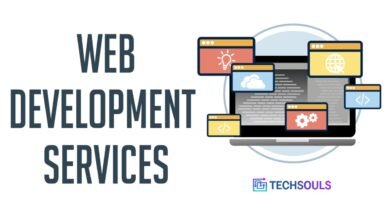10 Massive Education and Training Technology Trends in 2025
Discover the top education technology trends shaping 2025. From AI-powered learning to immersive VR experiences, explore what's transforming classrooms and workplaces.

The landscape of education technology is undergoing a dramatic transformation in 2025. What started as emergency remote learning solutions during the pandemic has evolved into sophisticated systems that are fundamentally changing how we teach, learn, and develop skills. The global edtech market continues its explosive growth, with projections showing the AI-in-education sector alone reaching $20 billion by 2027.
This shift goes beyond just adopting new tools. We’re seeing a complete rethinking of what effective learning looks like. Traditional classroom models are blending with digital experiences, corporate training is becoming more personalized, and students of all ages are demanding flexibility that matches their lifestyles. At the same time, educators and trainers face the challenge of implementing these technologies responsibly while ensuring they actually improve outcomes rather than just adding complexity.
Whether you’re an educator trying to keep pace with student expectations, a corporate training professional tasked with upskilling your workforce, or simply interested in where learning is headed, understanding these education and training technology trends isn’t optional anymore. It’s essential. Let’s explore the ten massive trends that are reshaping education and training in 2025.
1. Artificial Intelligence Becomes the Backbone of Personalized Learning
Artificial intelligence has moved from experimental to essential in 2025. AI-powered learning platforms now analyze student performance in real time, adjusting content difficulty, pacing, and presentation style to match individual needs. This isn’t the one-size-fits-all education model your parents experienced.
The technology works by continuously assessing how students interact with material. If someone struggles with a concept, the system automatically provides additional resources, different explanations, or practice problems. When a learner excels, it accelerates their progression. According to recent reports, over 86% of companies plan to increase their adoption of AI to support corporate training initiatives over the next five years.
In K-12 settings, generative AI tools are helping teachers create customized lesson plans, generate practice questions, and provide instant feedback on assignments. For corporate environments, AI is automating administrative tasks like grading and scheduling, freeing up instructors to focus on meaningful interactions with learners.
The key development in 2025 is the shift from “AI for everything” to strategic AI integration. Organizations are learning that successful implementation requires identifying specific problems AI can solve rather than adopting it because it’s trendy. Schools are establishing guidelines rather than rigid policies, recognizing that AI literacy is now as fundamental as digital literacy.
2. Extended Reality Creates Immersive Learning Environments
Virtual reality, augmented reality, and mixed reality (collectively known as XR) are no longer futuristic concepts. They’re becoming mainstream educational tools. Spending on advanced technology in education reached $12.6 billion in 2025, up dramatically from just a few years ago.
These immersive learning technologies allow students to experience things that would be impossible, dangerous, or prohibitively expensive in traditional settings. Medical students perform virtual surgeries. History classes visit ancient Rome. Chemistry students conduct experiments without chemical hazards. Aviation trainees practice emergency procedures without risking lives or expensive equipment.
In corporate training, XR is particularly valuable for high-risk industries. Manufacturing employees learn to operate heavy machinery safely. Emergency responders practice disaster scenarios. Customer service teams role-play difficult conversations in realistic virtual environments.
The barrier to adoption continues dropping as equipment costs decrease. What once required expensive headsets can now run on smartphones or tablets using AR. Schools and companies are discovering that the investment pays off through better retention, reduced training time, and safer skill development.
3. Microlearning Addresses Shrinking Attention Spans
The days of hour-long lectures and day-long training sessions are fading. Microlearning delivers education in bite-sized, focused segments typically lasting 5-10 minutes. This approach aligns perfectly with how modern learners consume information and matches their decreasing attention spans.
Research shows that 70% of employees prefer online self-paced courses, with 69% specifically wanting short video lessons or tutorials. The format works because it fits into busy schedules. Employees can complete a module during a coffee break. Students can review concepts between classes. The content is specific enough to address one topic thoroughly rather than overwhelming learners with information.
Adaptive learning platforms have embraced microlearning by breaking complex subjects into modular courses. Learners progress at their own pace, and the system tracks which concepts they’ve mastered. This creates higher completion rates and better knowledge retention compared to traditional marathon training sessions.
For corporate environments, microlearning supports just-in-time training. Sales teams can quickly review product details before client meetings. Technical staff can access procedural videos when facing unfamiliar situations. The knowledge is available exactly when needed rather than delivered months in advance and forgotten.
4. Learning Analytics Transforms Decision-Making
Data-driven learning has matured beyond simple completion tracking. Modern learning analytics provide deep insights into student engagement, performance patterns, and behavioral trends. Forecasts predict that 70% of edtech platforms will integrate advanced analytics by 2026.
These systems help educators identify struggling students before they fail. They reveal which teaching methods work best for different learning styles. They show which content engages learners and which sections cause confusion. For administrators, analytics demonstrate training ROI by connecting learning activities to business outcomes.
The technology pulls data from multiple sources including learning management systems, assessment tools, and even classroom participation. Machine learning algorithms identify patterns that humans might miss. A sudden drop in engagement might predict an at-risk student. Consistent errors on specific question types might reveal curriculum gaps.
Privacy remains a significant concern as analytics become more sophisticated. Leading institutions are implementing transparent systems that protect student data while still providing valuable insights. The focus in 2025 is balancing the power of analytics with ethical data use.
5. Gamification Makes Learning Competitive and Engaging
Gamification in education has evolved beyond simple badges and points. Today’s implementations create sophisticated learning games, simulations, and experiences that make education genuinely engaging. Studies show a 30% increase in engagement when collaborative platforms with gamified elements are used in remote education.
The approach works because it taps into natural human psychology. Competition motivates many learners to push themselves. Progress bars and level systems provide clear goals and a sense of achievement. Leaderboards create friendly rivalry. Team-based challenges build collaboration skills while making learning social.
In corporate settings, gamification appears in sales training simulations where reps practice pitches and earn points for successful outcomes. Cybersecurity teams complete escape room challenges to learn threat detection. Compliance training, traditionally dry material, becomes interactive scenarios where choices have consequences.
The key is using competition carefully. Modern gamification emphasizes personal progress and skill mastery alongside competitive elements. This prevents demotivating learners who aren’t naturally competitive while still engaging those who are.
6. Mobile Learning Enables Anytime, Anywhere Education
Mobile learning isn’t new, but its importance has skyrocketed as 5G networks expand and smartphones become more powerful. The flexibility to learn from any location at any time has shifted from nice-to-have to essential.
This trend supports the growing demand for continuous learning throughout careers. Professionals can’t afford to take months off for training. They need to upskill while working. Mobile platforms deliver content that fits into commutes, lunch breaks, and evenings. The learning happens in natural gaps throughout the day.
For global organizations, mobile learning solves geographic challenges. Teams spread across continents access the same training materials. Updates reach everyone simultaneously. Language barriers decrease as AI-powered translation becomes standard in mobile learning apps.
The technology also advances digital equity. Students in areas with limited access to traditional computers can still participate in online education through smartphones. While this doesn’t solve all equity issues, it’s narrowing the digital divide that has historically left some learners behind.
7. Social and Collaborative Learning Builds Community
Learning has always been social, but collaborative learning platforms are bringing peer-to-peer education to digital environments. These systems mirror social media with features like forums, video discussions, shared resources, and real-time interaction.
The trend addresses one of remote learning’s biggest weaknesses: isolation. When students and employees learn alone, they miss the spontaneous conversations, shared struggles, and community support that make education meaningful. Social learning platforms recreate these dynamics online.
Features include study groups where learners can discuss concepts, peer review systems that let students evaluate each other’s work, and shared workspaces for group projects. Some platforms enable learners to create and share their own content, building a collective knowledge base that grows richer over time.
For corporations, this approach is particularly valuable in onboarding. New employees connect with peers going through similar experiences. They build networks that extend beyond training into their ongoing work. The social bonds formed during learning translate into better collaboration on the job.
8. Skills-Based Training Replaces One-Size-Fits-All Programs
The upskilling and reskilling revolution continues accelerating in 2025. Organizations recognize that traditional credentials like degrees matter less than specific skills. A Deloitte study estimates that by 2030, two-thirds of jobs will heavily rely on soft skills like communication, leadership, and adaptability.
This shift requires sophisticated technology to succeed. Skills assessment tools identify gaps in employee capabilities. Mapping technologies show how current skills translate to different roles. Analytics track skill development over time. Platforms recommend personalized learning paths based on career goals and organizational needs.
The focus extends beyond technical competencies. Leadership training, emotional intelligence, and critical thinking receive equal emphasis. As automation handles routine tasks, uniquely human skills become the competitive differentiator.
For learners, skills-based training means more relevant education. Rather than sitting through generic courses, they develop specific capabilities needed for their roles. Progress is measured by demonstrable skills rather than hours spent in training. This creates clear value and motivates continued learning.
9. Cloud-Based Systems Democratize Access to Education
Cloud-based learning management systems have become the infrastructure supporting modern education. These platforms eliminate the need for expensive on-premise IT equipment, reduce costs, and make learning accessible from any device with internet access.
The technology allows seamless scaling. A training program can expand from dozens to thousands of learners without infrastructure investments. Updates roll out simultaneously to all users. Content creators can collaborate from different locations. Learners access materials whether they’re in the office, at home, or traveling.
Integration capabilities make cloud platforms powerful. They connect with other business systems, pulling data from HR platforms, productivity tools, and communication apps. This creates unified experiences where learning flows naturally into daily work rather than existing in a separate silo.
According to research from leading educational institutions, cloud adoption is expected to increase significantly in 2025 as organizations recognize both the cost savings and enhanced accessibility these systems provide.
10. Focus on Accessibility and Inclusion Drives Innovation
Digital equity and accessibility aren’t just compliance boxes to check anymore. Leading organizations recognize that inclusive design creates better products for everyone. When you design learning experiences that work for students with disabilities, you often create experiences that work better for all learners.
This trend manifests in multiple ways. Speech-to-text tools help students with mobility challenges while also supporting those who learn better by speaking ideas aloud. Screen readers designed for visually impaired users improve navigation for everyone. Captioning helps deaf students and also benefits learners in noisy environments or non-native speakers.
AI tools are particularly valuable for accessibility. Real-time translation supports multilingual learners. Adaptive interfaces adjust to individual needs automatically. Content can be presented in multiple formats (text, audio, video) to match learning preferences.
The push for accessibility is also driving innovation in offline-capable apps and low-bandwidth solutions. Not all learners have reliable high-speed internet. Platforms that work offline or on slower connections ensure education reaches everyone, not just those with premium connectivity.
Conclusion
The education and training technology trends shaping 2025 represent more than incremental improvements. They’re fundamentally changing what learning looks like and who can access it. From AI-powered personalization to immersive VR experiences, from microlearning modules that fit into busy lives to collaborative platforms that recreate classroom community online, these technologies are making education more effective, engaging, and equitable. The organizations and institutions that embrace these trends strategically will be better positioned to develop skills, engage learners, and prepare people for the rapidly changing future of work and life. Success won’t come from adopting every new tool, but from thoughtfully implementing technologies that solve real problems and measurably improve outcomes.







